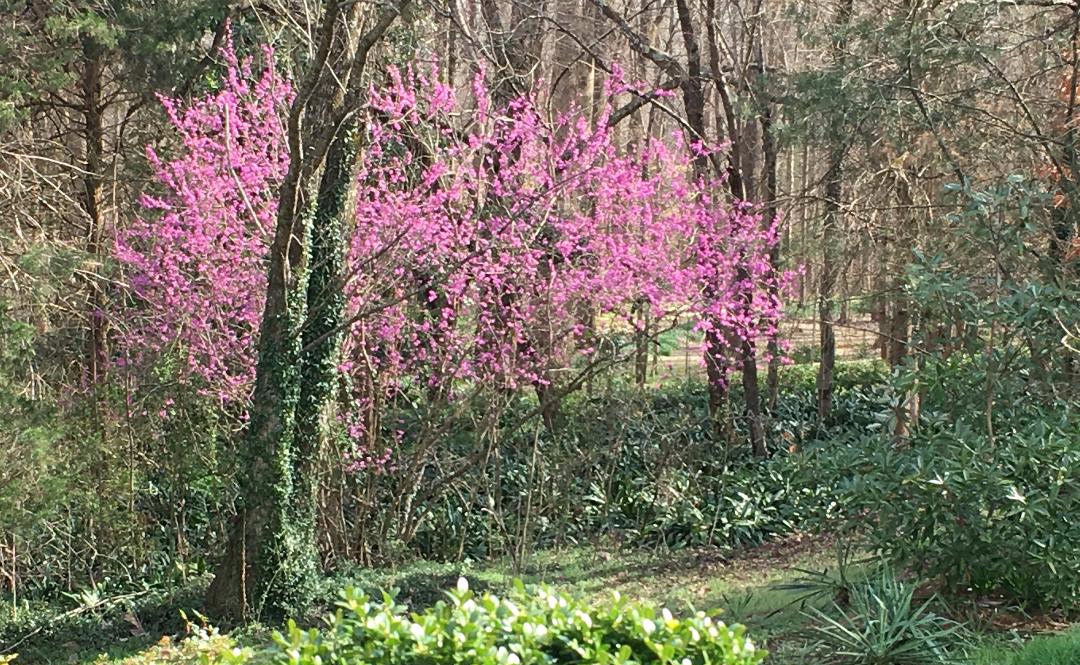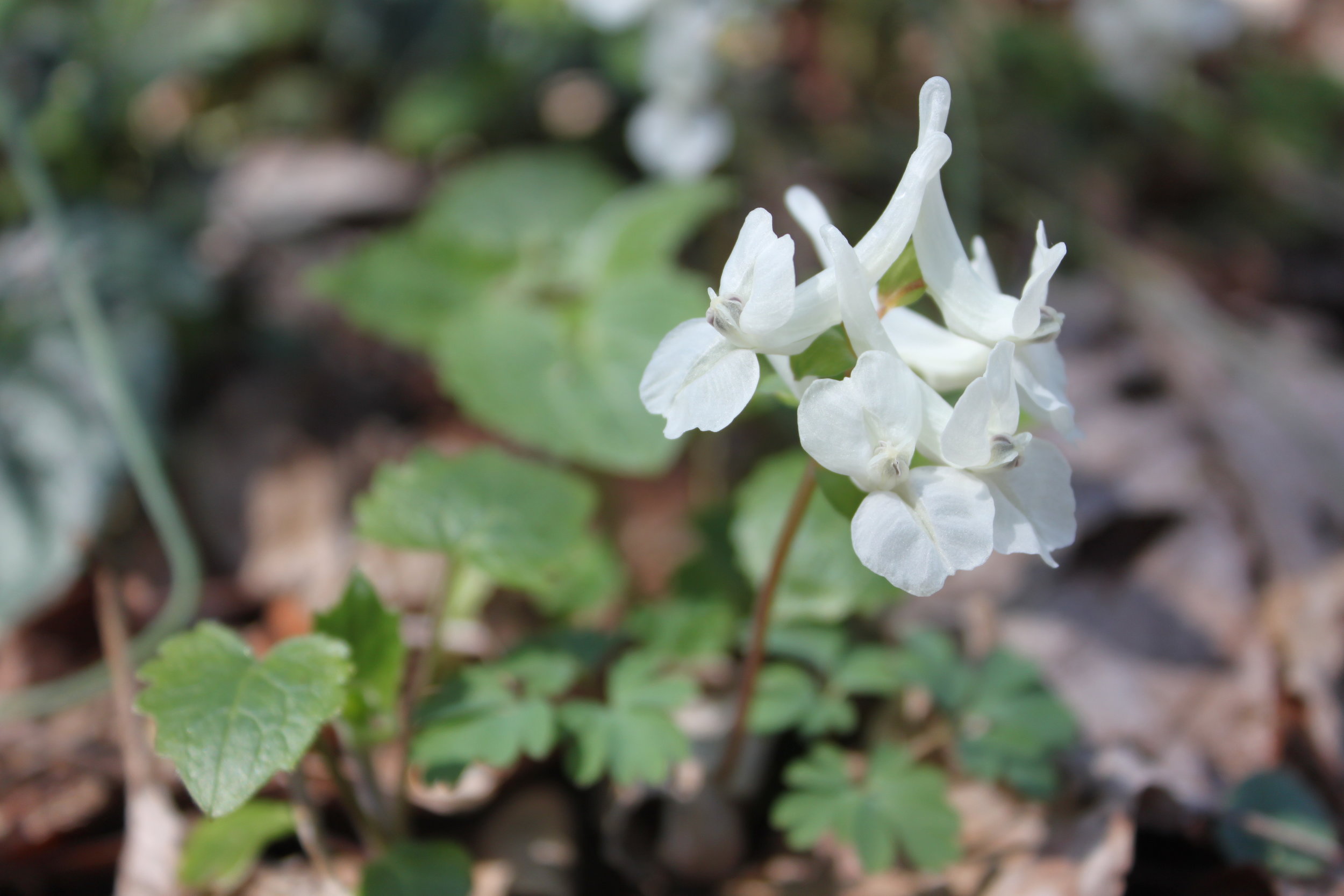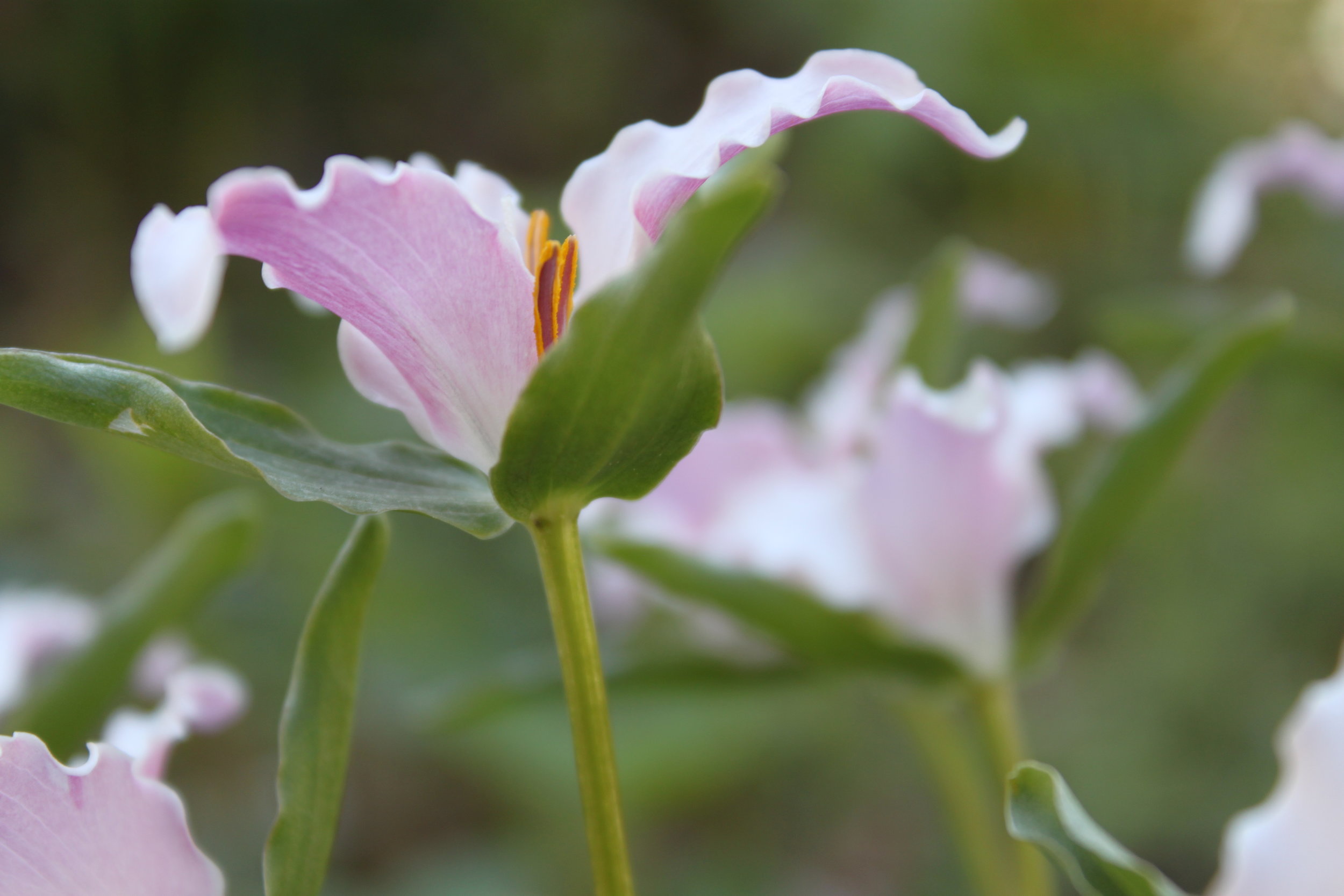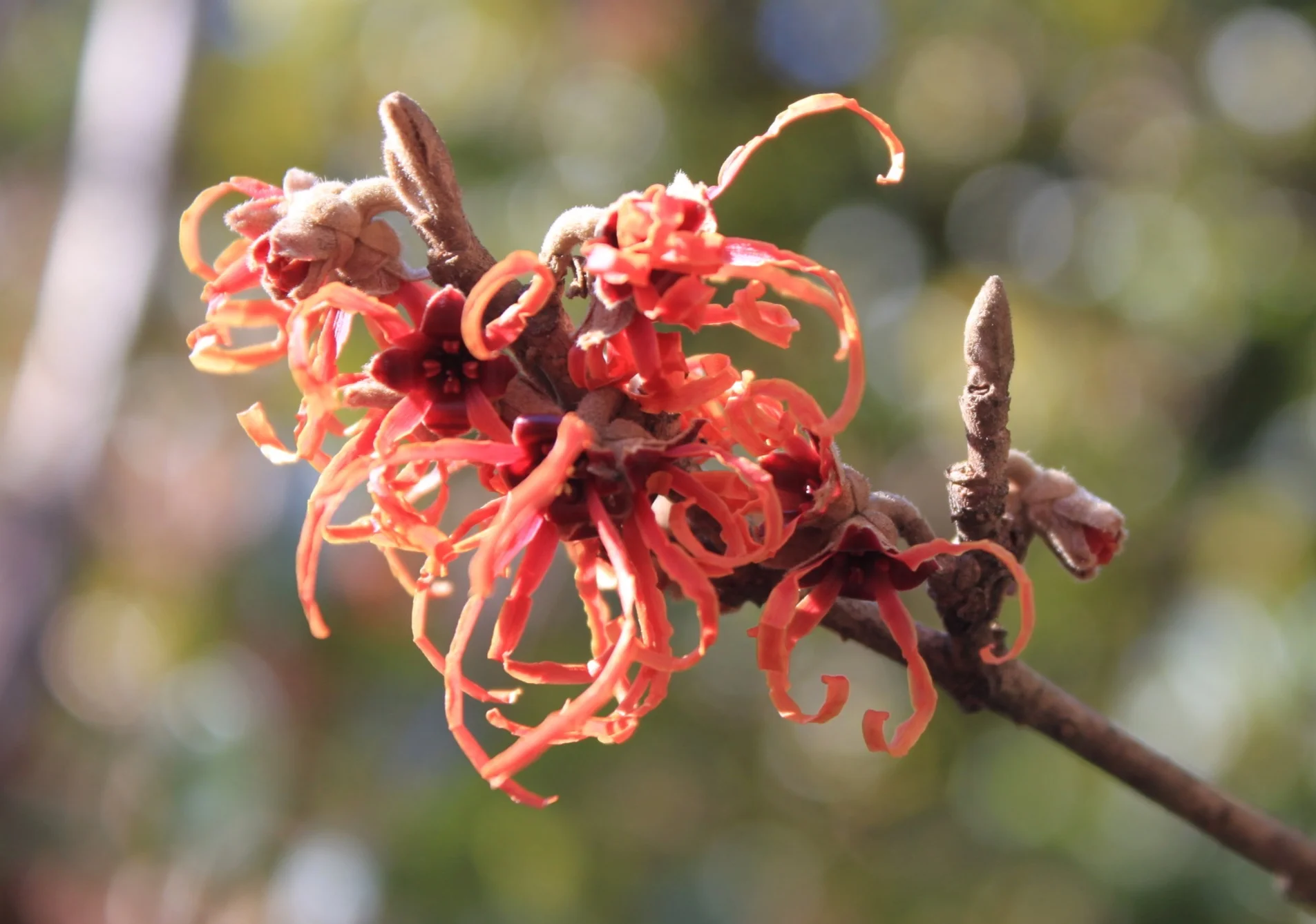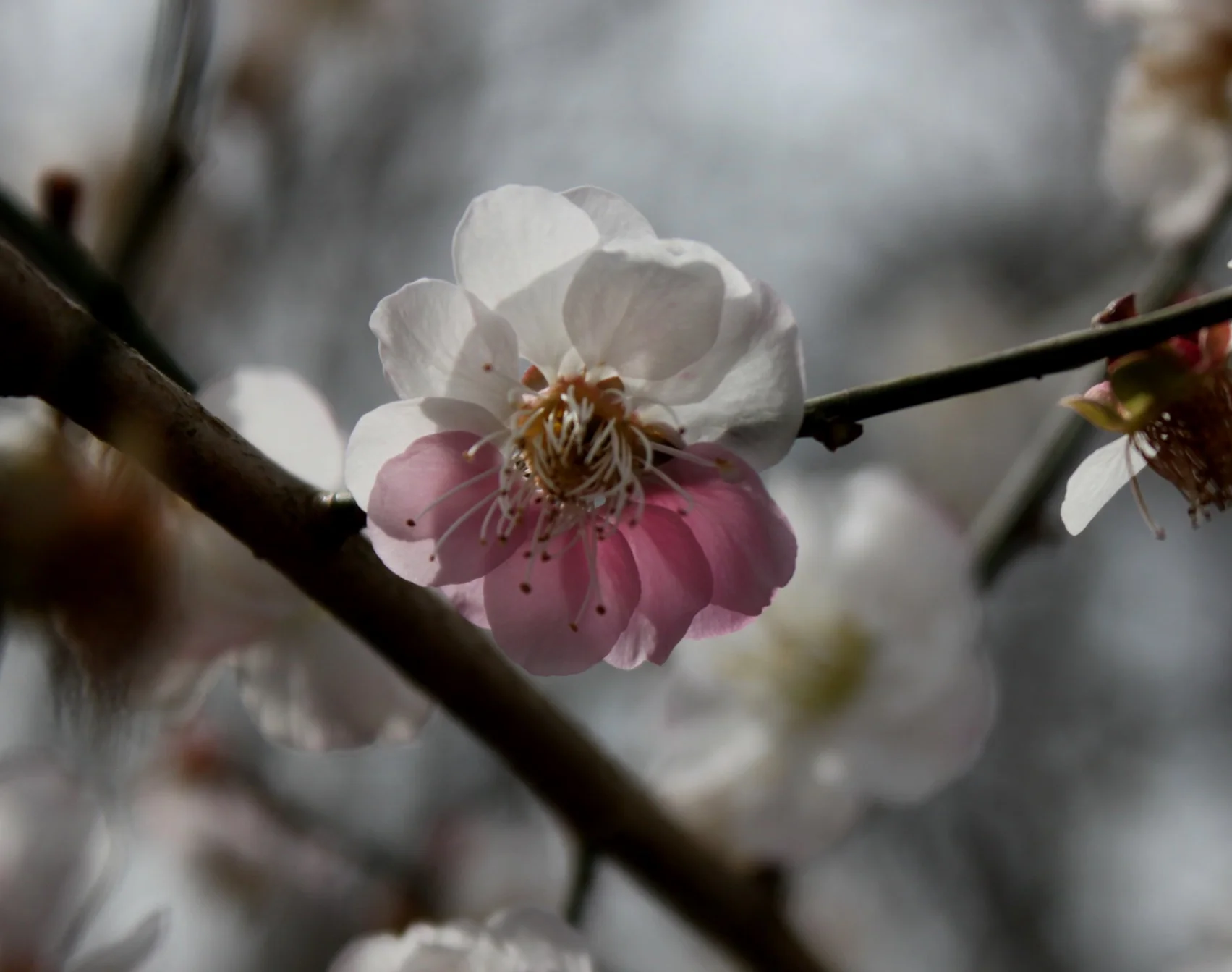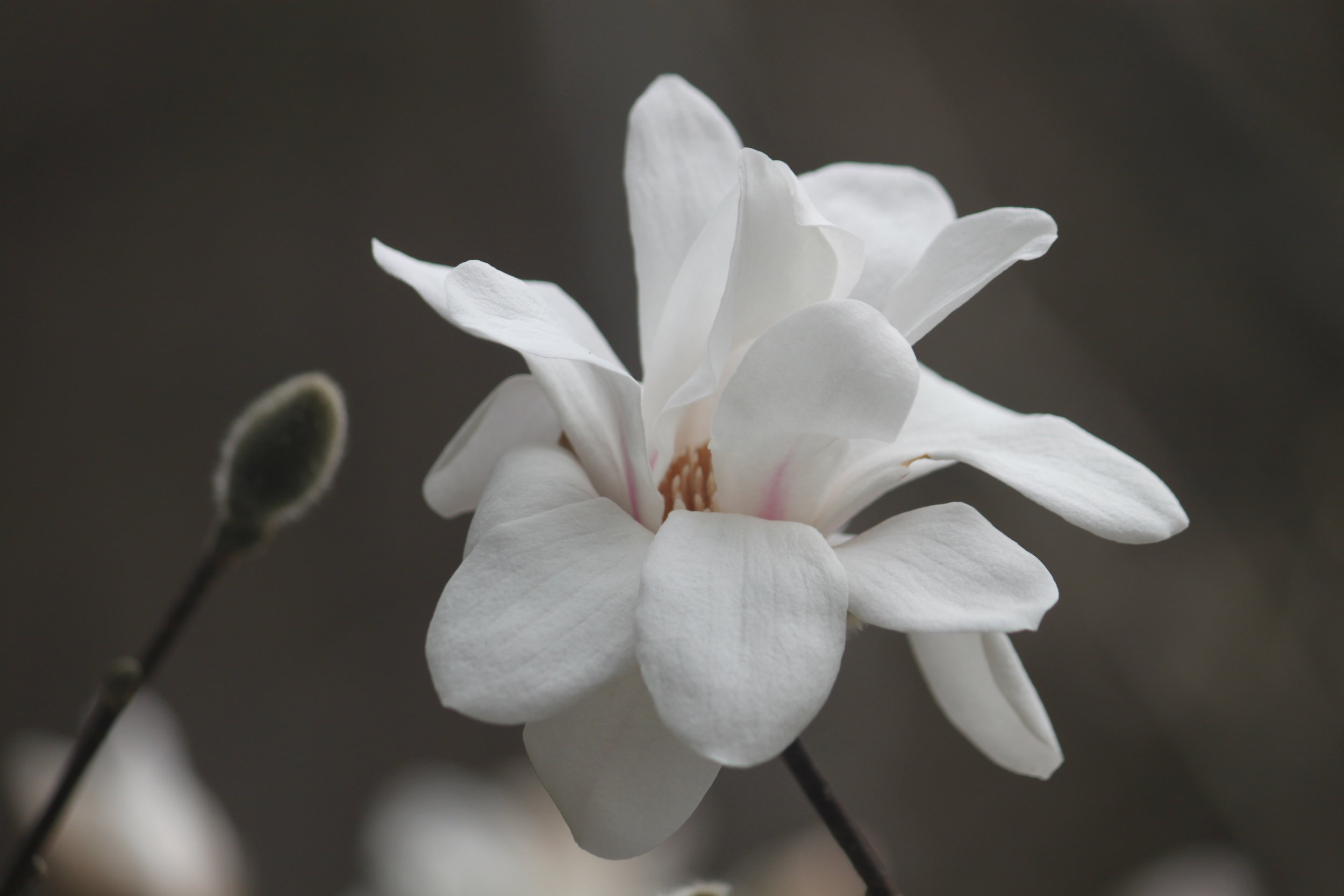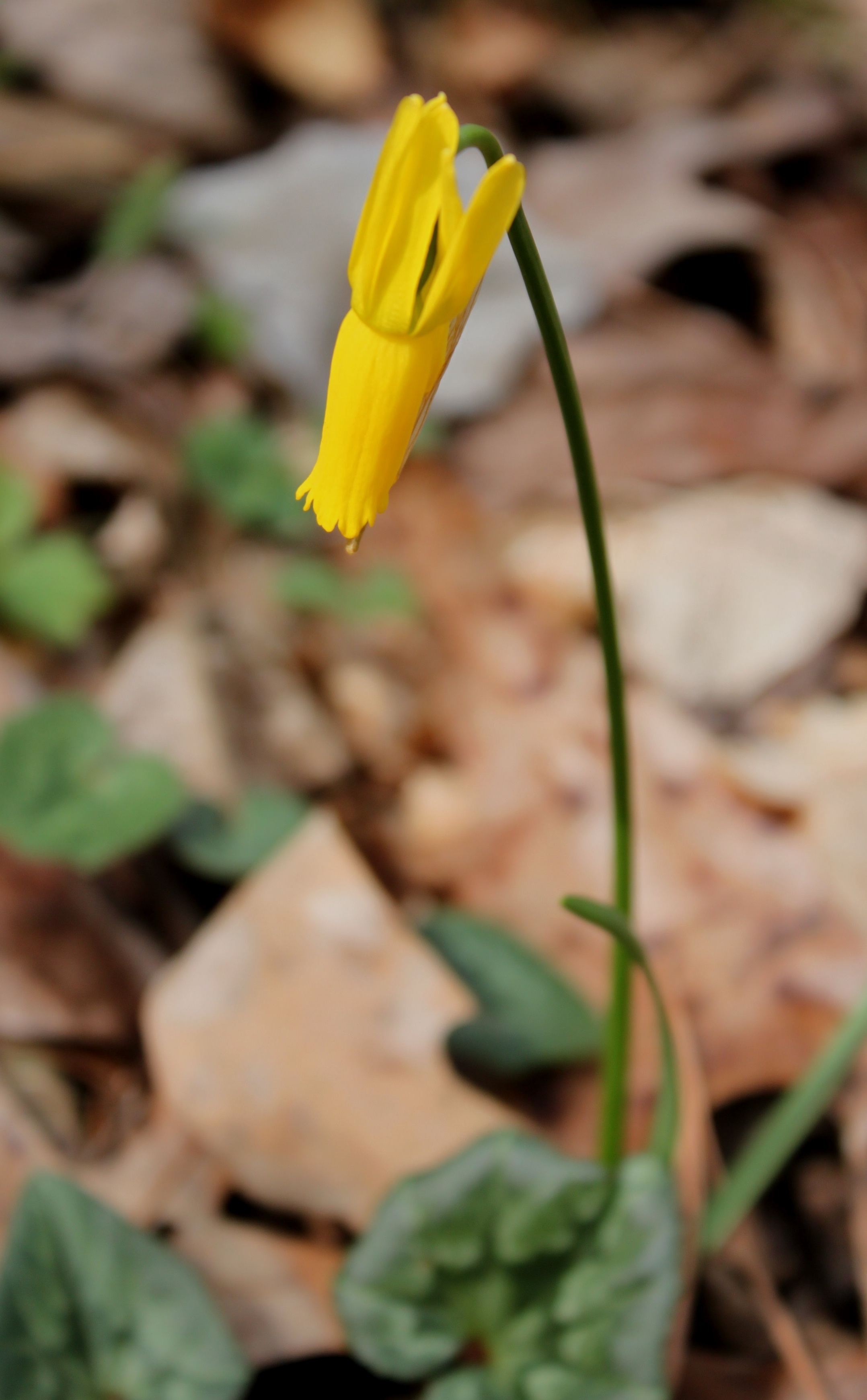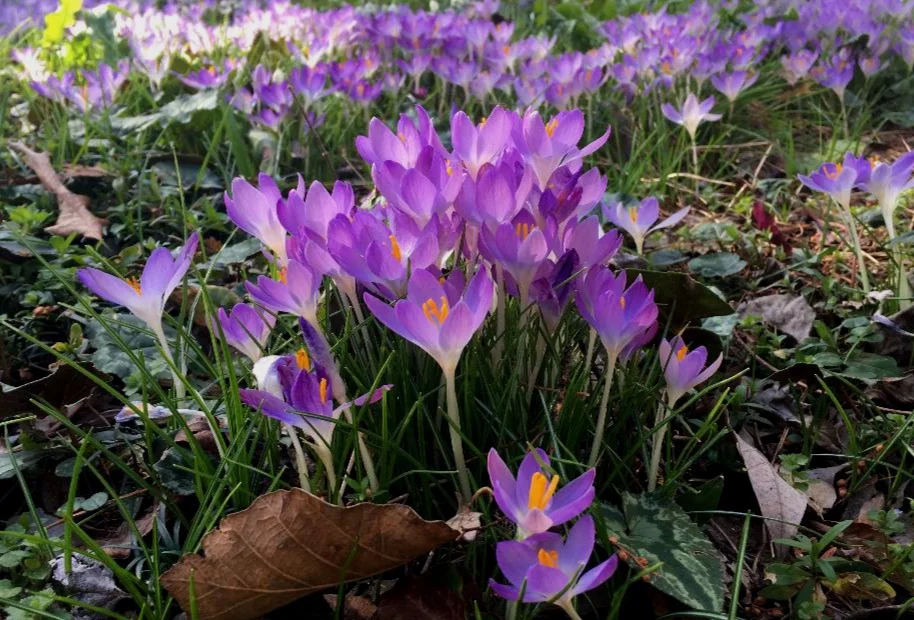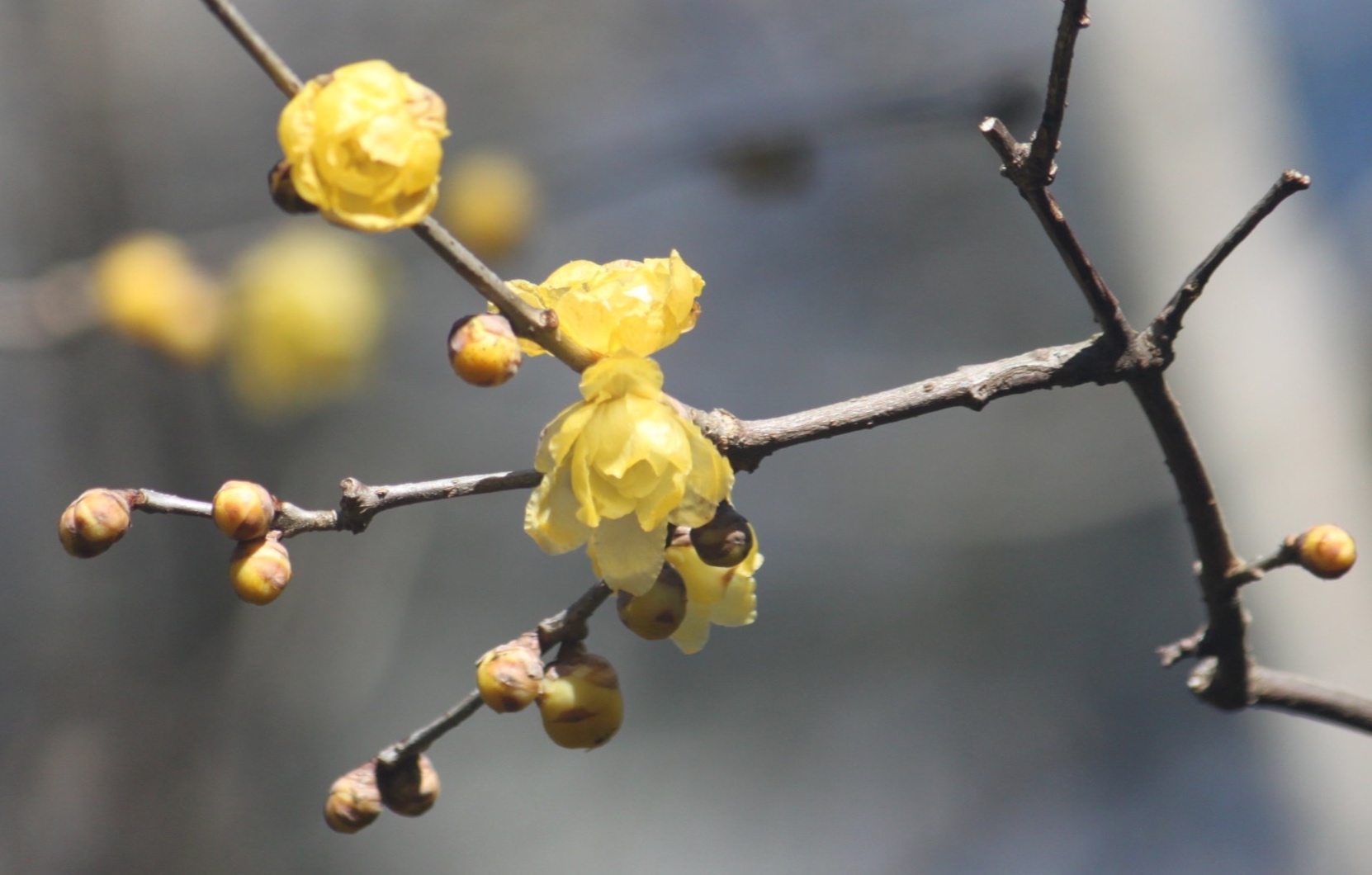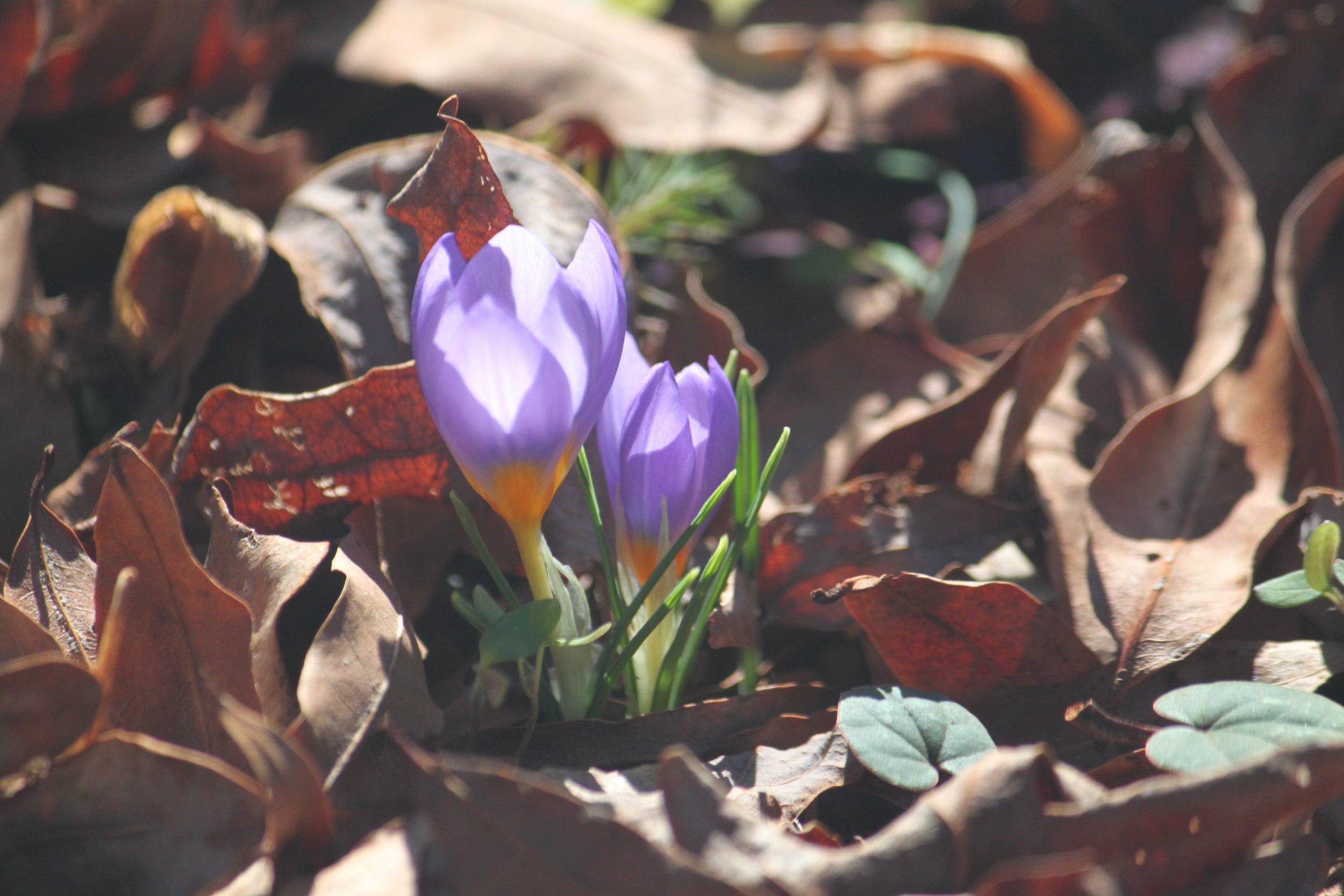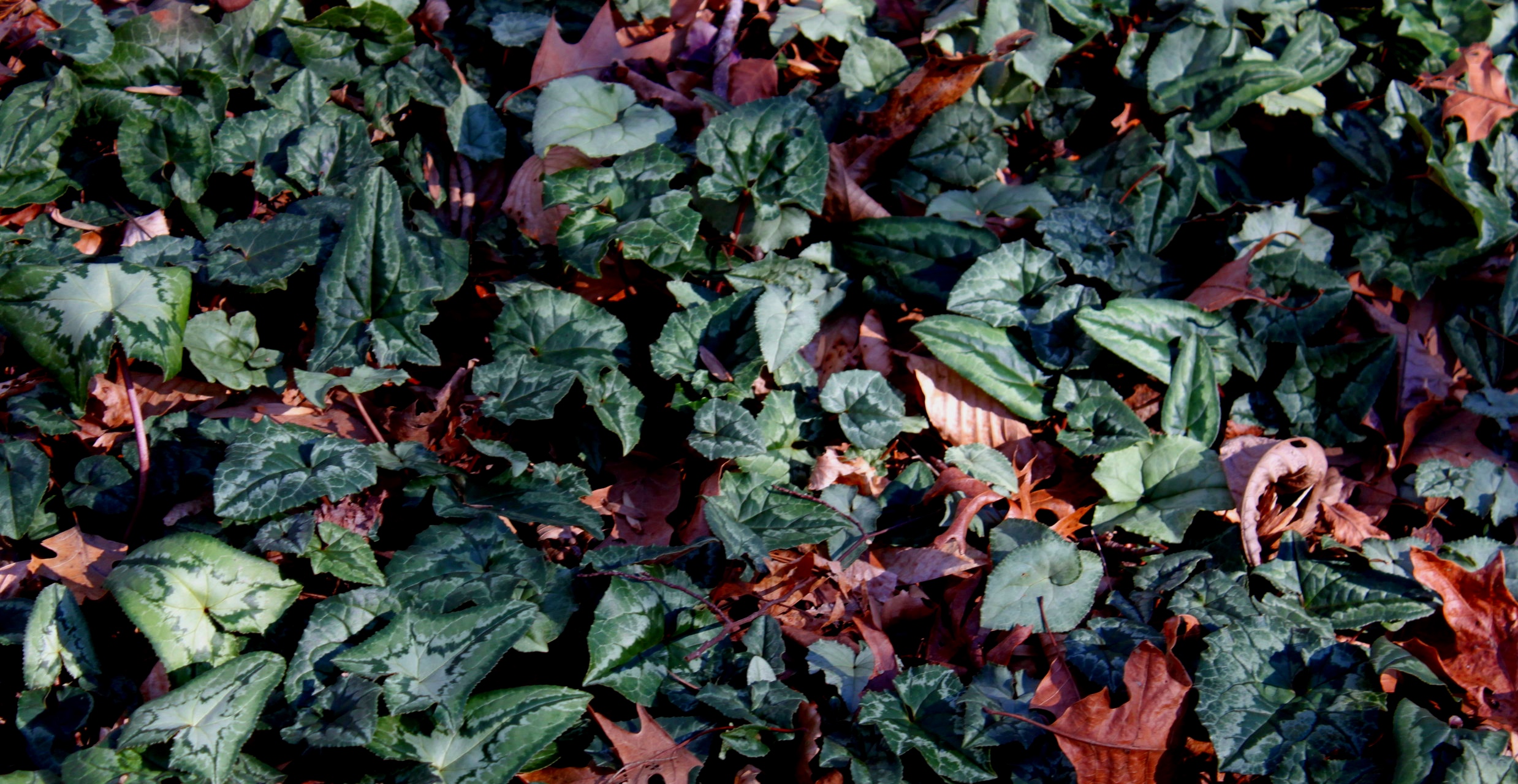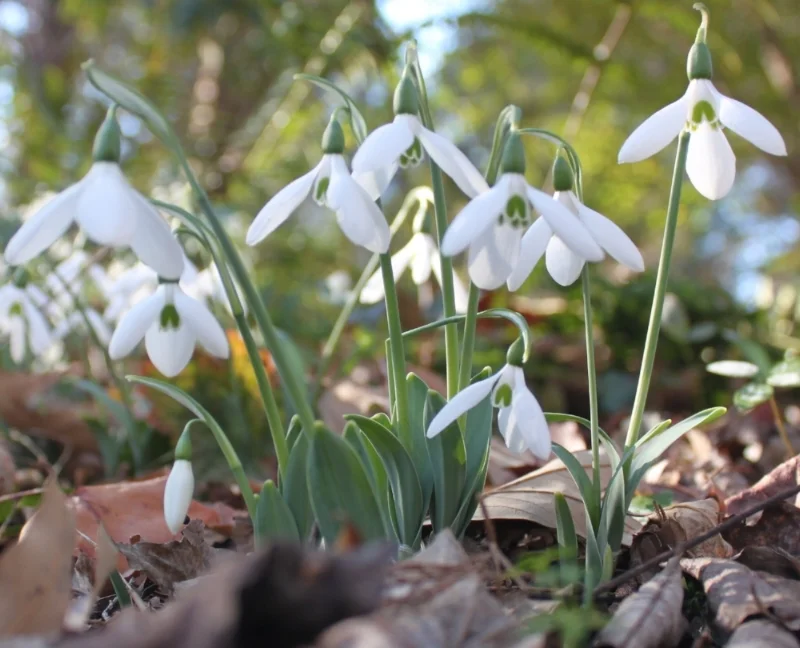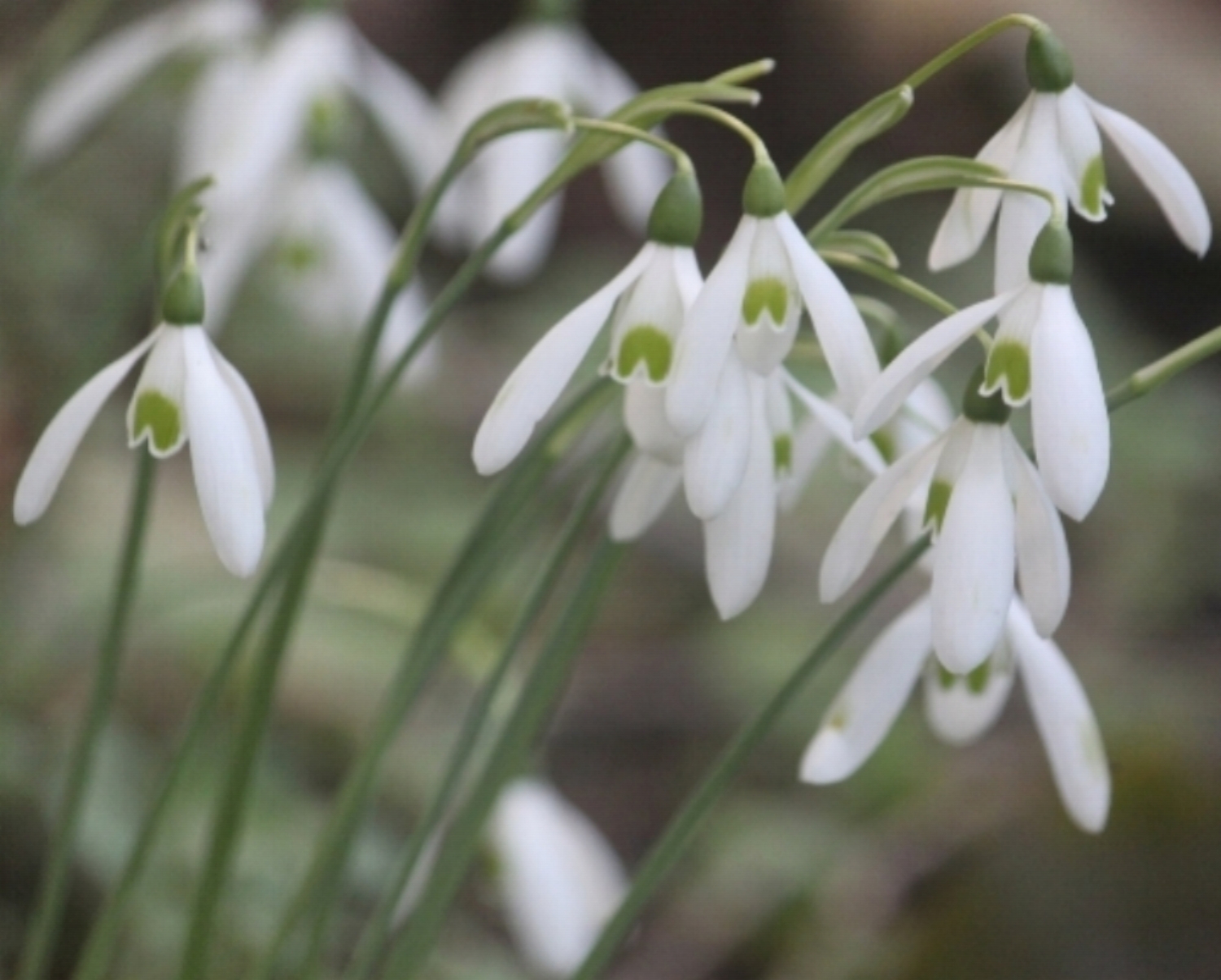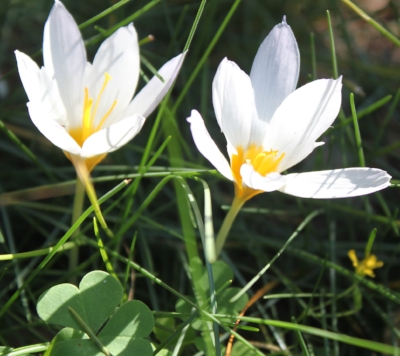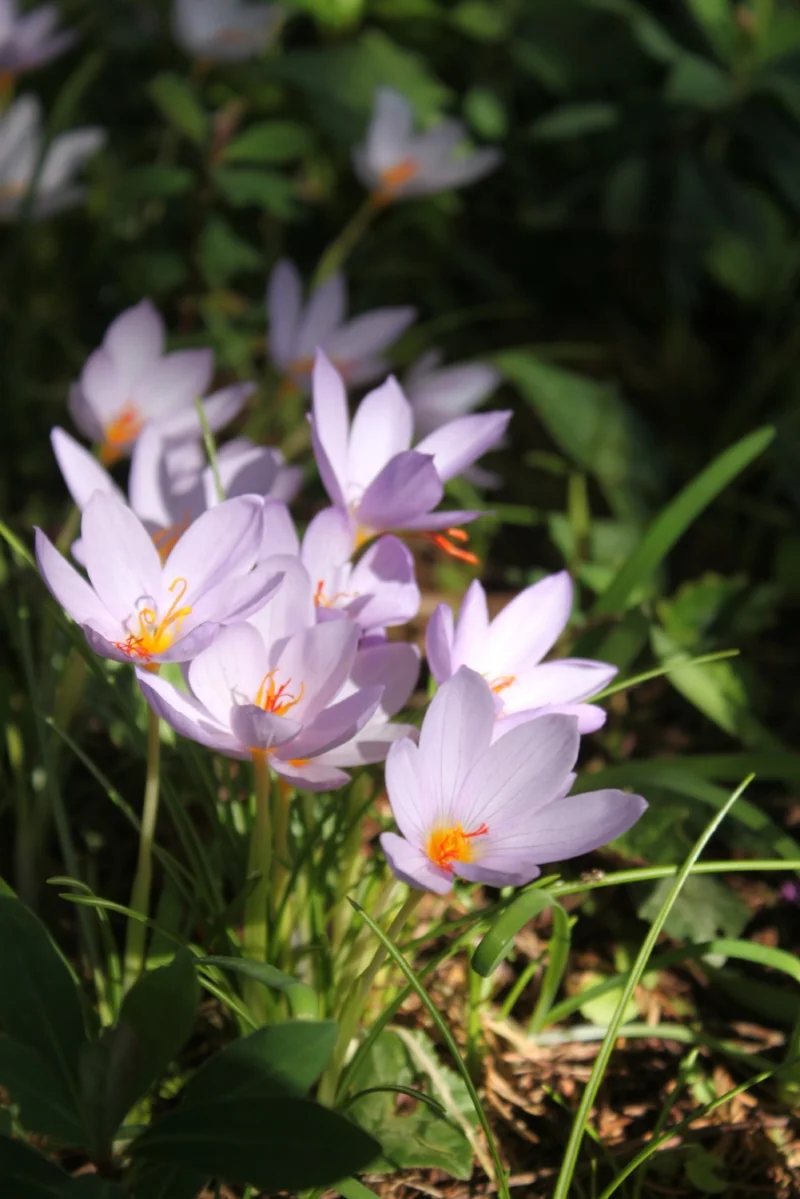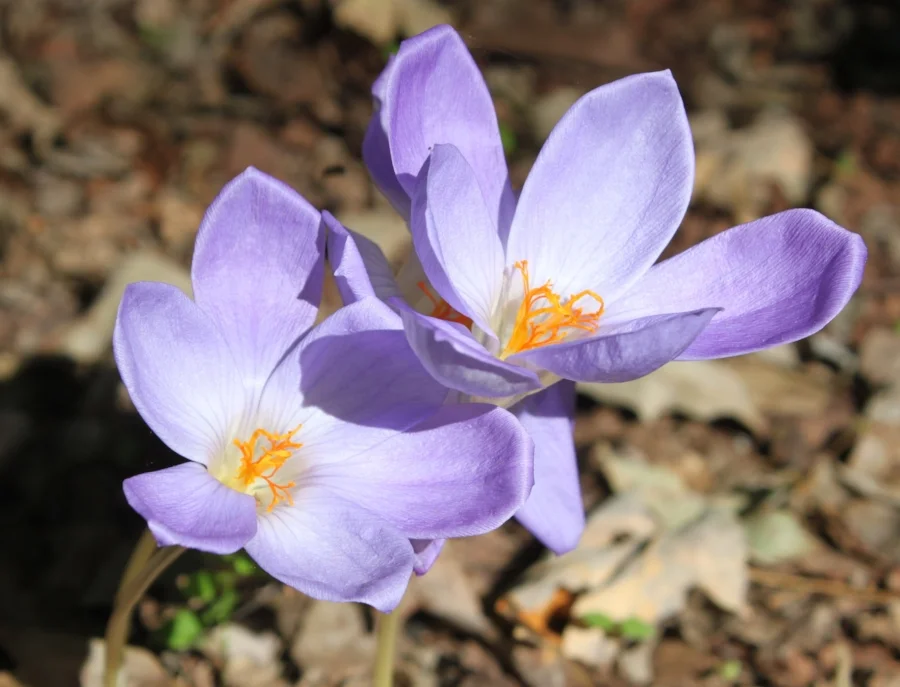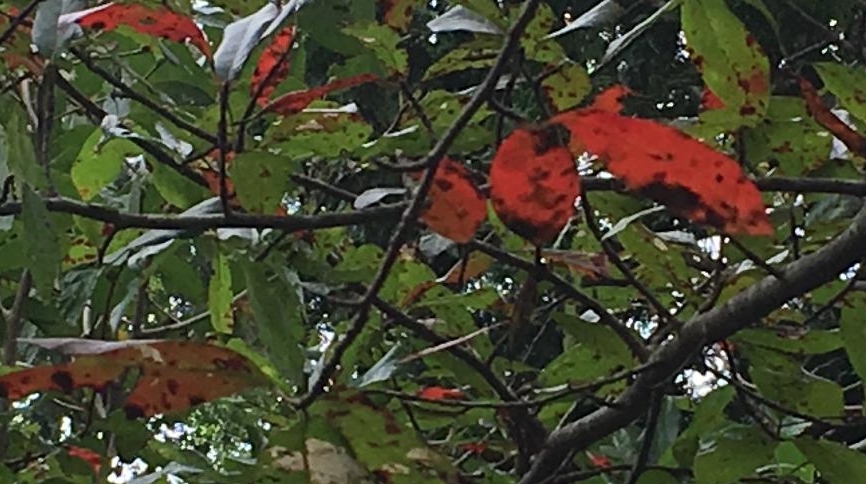Each day brings forth emerging buds at ground level, newly opened flowers on trees and shrubs, and swelling leaf buds throughout the garden. Yellow, chartreuse, and shades of pink and purple are the main colors but there are subtleties of shades.
Along the edge of the field on the west side of the property masses of daffodils bloom, many of which haven’t been divided during our forty-two years here. They were planted in rows as if in a furrow made by a plow and always make us think of the very first spring which was one of discovery. We found other old forms throughout the garden that year, even some in the woods, most of which have now come into the main planting. This is an excellent time to divide bulbs—better in many ways than waiting until the bulbs settle down. We can see where they are needed, where others are growing, so we don’t dig into dormant clumps in late spring, and can see those which are struggling in their current locations.
Cercis siliquastrum
Corydalis solida
When we look up, we see the fluffy, pale pink flowers on weeping cherries, deeper pink ones on peaches, and magenta redbuds, the earliest being Cercis siliquastrum. The freshest of chartreuse leaves on the willows hover over the Blue and Yellow garden. Small fluffy corydalis in white or shades of blue or red spread throughout the woods and are a welcome invitation to bend lower.
Trillium pusillum var. undulatum
Trillium pusillum var. undulatum opened with wavy edges and tinges of pink on the underside of the petals. This is our most exciting trillium because it is one of several which is spreading through various sections of the woods. We found a large patch, smothered by hellebores, rescued it, divided the clump into sections, and planted them in the newly cleared triangle near the pond. Trillium decumbens is as beautiful in leaf as in flower. Medium green leaves hover just above ground with their bloom buds vertical looking as if they are about to expand and they are! T. cuneatum has opened in many places, but is still tightly closed in others.
Trillium pusillum var. undulatum
Anemone blanda
Anemone blanda, always a welcome sight in the woods and in the rock garden, is being smothered by Ipheion uniflorum now naturalized beneath the metasequoias and spreading into the nearby lawn. Carefully we dig out the tubers and replant them away from their invasive neighbor. The flowers come in white and shades of blue and pink and dig out others seedlings that appear in the road and paths in the woods.
Sanguinaria canadensis, pink
Blood-root stops us in our tracks to look and compare the flowers. A quick glance reveals a brilliant white flower, but upon closer inspection we see extraordinary differences—more petals, wide or narrow forms some with tinges of pink, and early or later appearances.
At this season, we go down to “the bottom” of our land where snowflakes have now replaced the snowdrops and Hyacinthus orientalis are at their peak. We found both of them on this property but have added other forms to extend the blooming period. Both are naturalizing through seeds and division. Seeds are most exciting because that way we may produce something different, perhaps even better.
Nothing could be better than to be here in the garden at this season.
Hyacinthus orientalis

